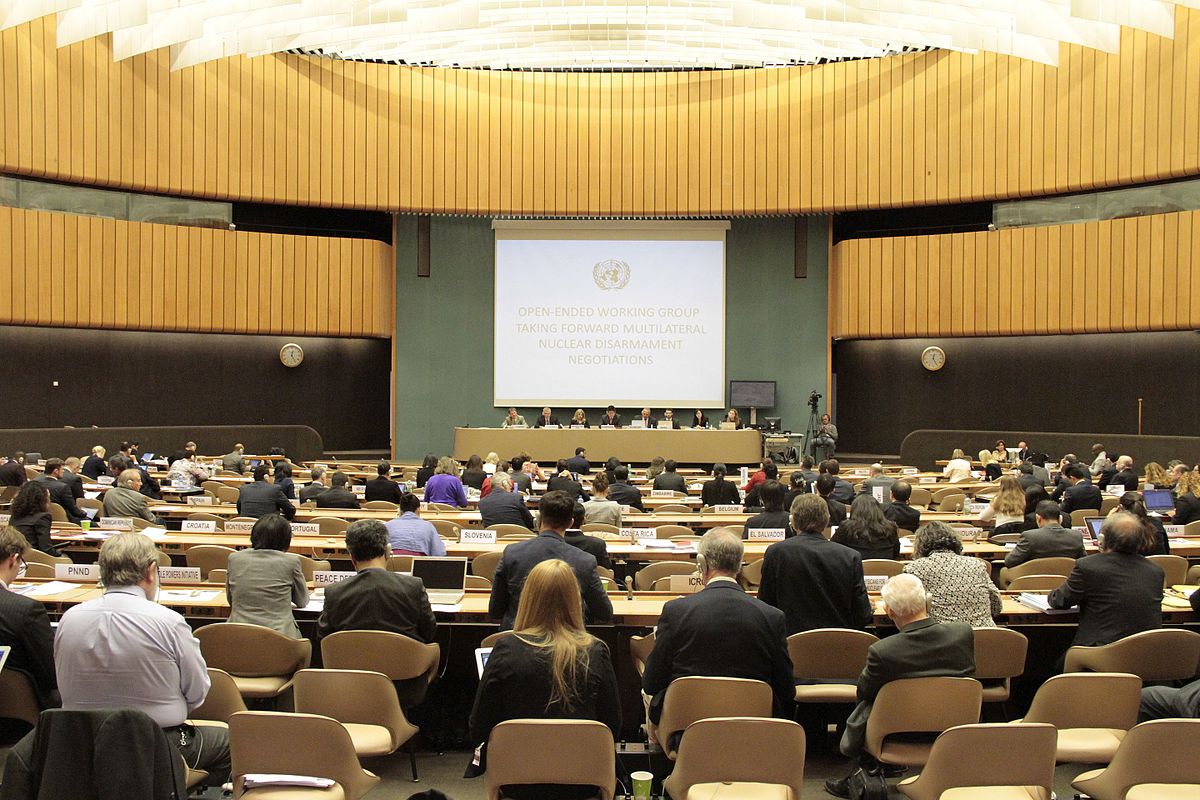
On 22 and 23 March 2018 the Toda Peace Institute, the Asia Pacific Leadership Network (APLN) and the European Leadership Network (ELN), in partnership with the Nuclear Threat Initiative (NTI), hosted an expert workshop, ‘Bridging the Gap: Harmonizing the NPT and the Nuclear Ban Treaty’, in Seoul, Republic of Korea. The discussion covered a wide range of issues including tensions between the two nuclear legal instruments, the challenges of implementing disarmament and non-proliferation in a deteriorating global security environment, strengthening existing multilateral disarmament fora and reviving political leadership and engagement in nuclear diplomacy. This note elaborates on some of the ideas raised during the day which, if implemented, would strengthen international frameworks and boost nuclear disarmament and non-proliferation.

-
- Worsening adversarial great power relations, the potential collapse of arms control between the US and Russia, expanding nuclear weapons modernisation programmes, growing nuclear stockpiles in some states and emerging disruptive technologies all form part of a deteriorating security environment. Disarmament proponents should be attuned to these challenges and tailor their advocacy accordingly.
- There should be no complacency over the health and future of the NPT. The case must now be re-made for the security benefits of the treaty. Every country benefits from a strong and effective NPT regime that prevents the spread of nuclear weapons. Moreover, it is the only treaty that binds the US, Russia, China, France and the UK to nuclear disarmament. It provides important security benefits to all states, whether party to the treaty or not, across geographical and geopolitical divides. The NPT is a global public good. Yet if the nuclear weapon states do not make further progress on their end of the NPT bargain and other states-parties start questioning the treaty’s effectiveness and relevance, its security benefits will erode.
- For the NPT to remain healthy and viable, arguing that resolving international security problems is a prerequisite for nuclear disarmament, as most Nuclear Weapon States (NWS) do, is not a sufficient excuse for not following through on NPT Article VI commitments. Near-term steps to advance disarmament are necessary to achieve the long-term vision of a world free of nuclear weapons. This is a vision subscribed to by the NWS at successive NPT Review Conferences as well as by the NATO nuclear alliance. In their own interests, the NWS need to take concrete steps ahead of the 2020 NPT Review Conference.
- At present there is insufficient cooperation between the NWS on nuclear disarmament and non-proliferation. The P5 must continue their collective efforts which have currently stalled, fostering trust and dialogue to implement a “minimisation agenda”, comprised of adjusting nuclear doctrines to be less escalatory, de-alerting measures, reducing nuclear deployments and decreasing stockpiles and linking these measures to NPT obligations.[1] There should also be better reporting within NPT Review Cycles, with transparency registers and scorecards reviewed at each PrepCom.
- The international community, and the nuclear armed states, must do everything possible to strengthen the nuclear taboo and prevent any use of nuclear weapons. International efforts to raise awareness of the catastrophic use of nuclear weapons should be revived. This campaign was side-lined when the humanitarian initiative evolved into the pro-nuclear ban treaty movement. To start such a conversation, disarmament proponents – be it those who favour an incremental approach or those who favour an outright ban – should examine the risks and consequences of a ‘nuclear winter’ in cooperation with the nuclear armed states. They should also revive educational initiatives that explore the humanitarian and environmental consequences of nuclear use.
- All of the nuclear armed states must do more to promote risk reduction efforts and crisis management. In an ideal world, all the nuclear armed states would adopt No First Use pledges. Realistically, this is unlikely, at least in the near future. One proposal would be for dyads or triads of states to adopt NFU commitments e.g. US-Russia-China or India-Pakistan or US-Russia. Expert studies should be commissioned that can demonstrate that reducing stockpile numbers will not diminish the security of nuclear armed states and their allies, but enhances global and regional security by reducing the risk of accident or unintentional use of nuclear weapons.
- An urgent priority is to extend the US-Russia bilateral treaty, New START, which limits the strategic nuclear delivery systems and warheads of both countries. If not prioritised, then strategic arms control will end in 2021. This would mean that for first time in nearly 50 years there would be no restrictions or arms control measures imposed on the US and Russia, the two largest nuclear weapon powers.
- Attempting to harmonise the ban treaty and the NPT is futile. The ban is a ban whereas the NPT is a half-way house. But is important to understand that the two treaties are compatible: they should not be presented as being in opposition to each other as that feeds an unhelpful dynamic of two opposing camps. Rather, since it is a half-way house, we should look at how the NPT can be usefully supplemented.
- Many diplomats feel that the ban treaty is disconnected from the disarmament machinery in Geneva. There is no mandate to discuss it there which challenges multilateralism. There is a global conversation about the nuclear ban treaty with potential implications on national policies but diplomats cannot formally discuss it, at least until it enters into force.
- The overly hostile language used to criticise the ban treaty, particularly by nuclear armed states, should be avoided. While it is symptomatic of the difference between the “should” (future vision-driven) and the “could” (present time-driven) approaches to the elimination of nuclear weapons, it only deepens divides. The ban treaty exists. It should be accepted as a new aspect of the nuclear disarmament landscape, however much it is disliked by some.
- The biggest discrepancy between the two treaties concerns the utility of nuclear deterrence. Nuclear deterrence in particular is built into the mind-sets of NWS national security establishments and remains a cornerstone of their defence strategies. Yet it will be hard to persuade a majority of non-nuclear weapon states that deterrence helps preserve international peace and security. The task would be somewhat easier if nuclear armed states and nuclear alliances took concrete disarmament and nuclear risk reduction steps to help bridge this difference of view. Such steps should include adoption of a nuclear ‘minimisation agenda’. Taken together, these efforts can make a positive net contribution to stability and predictability and would demonstrate to the global nuclear community that the nuclear armed states are taking steps towards “creating the conditions for a world free of nuclear weapons”.
- The 2019 Preparatory Committee (PrepCom) will be an opportunity to explore more meaningful ways of using the review process so that states (and diplomats) are not talking past each other but are engaging with the concerns and suggestions raised during these discussions. NPT PrepCom and RevCon chairs need to be appointed sooner to help ensure that there is a monitoring and accountability function to the cycle process. The PrepComs should be used to articulate again what a future of zero looks like. This is important for creating a positive normative and political environment. However, the Review Conferences should not be about the ban. Instead, they should celebrate the achievements of the NPT whilst acknowledging that more must be done by all the parties to maintain the health of the treaty.
- Expectations for the 2020 Review Conference (RevCon) are low. But an outcome document should not be taken as the only measure of success. States might choose to adopt a document acknowledging the issues they can reach consensus on, noting their differences on others. This would give all Parties the opportunity to express a shared commitment in sustaining the NPT.
- Looking ahead, different groups of nuclear states (e.g. “friends” or allies of nuclear armed states) could play a crucial role in in defending and voicing the importance of humanitarian concerns. Ahead of the 2020 RevCon, more focused attention should be given to the Non-Aligned Movement (NAM) and their expectations and ambitions for the outcome of the conference. That also applies to the allies of nuclear armed states and their disarmament goals.
- Neither the NPT, nor the ban treaty is self-implementing. Both require consistent and constant engagement to function. They are not immune to political turbulence and wider foreign policy problems can bleed into disarmament and non-proliferation efforts. The challenges to non-proliferation and disarmament will not be resolved overnight. However, the current situation can be turned into an opportunity to revisit old assumptions, re-assess priorities and consider more modest, but practical arrangements that can serve as bridge-builders between polarised communities.
A short meeting report highlighting the key themes of the Seoul workshop can be accessed here: Harmonizing the NPT and the Nuclear Ban Treaty.
[1] For more information please see the Report of The International Commission on Nuclear Non-Proliferation and Disarmament, Commission co-chaired by Gareth Evans and Yoriko Kawaguchi, November 2009, Chapter 18: ‘Medium Term Action Agenda: To 2025 – Getting to the Minimization Point’, Available here: http://www.icnnd.org/reference/reports/ent/part-iv-18.html.
The opinions articulated above also do not necessarily reflect the position of the European Leadership Network or any of its members. The ELN’s aim is to encourage debates that will help develop Europe’s capacity to address pressing foreign, defence, and security challenges.





